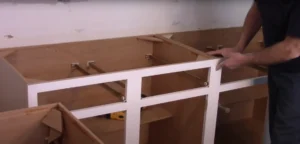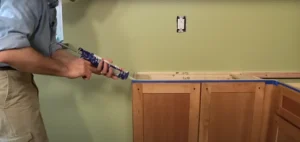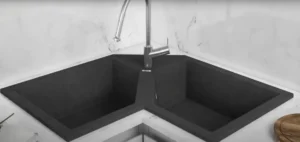Thinking about adding a bathroom to your house? It’s a common need as families grow or desires for home upgrades emerge. On average, setting up a new full bathroom can set you back between $10,000 and $50,000.
This guide promises clear steps to tackle this project without getting lost in the weeds. Get ready for some eye-opening tips!
Key Takeaways
- Adding a bathroom costs between $10,000 and $50,000 on average. This price changes depending on the type of bathroom – half, three-quarter, full, or primary – and its features.
- The location of the new bathroom in your house affects the cost significantly. Putting it where plumbing already exists can save money. Basement bathrooms usually cost more because they need special plumbing work.
- Labor is a big part of the expense when adding a bathroom, with costs ranging from $5,000 to over $25,000 based on whether you’re converting space or building new.
- Saving money on a new bathroom involves planning well, using existing spaces smartly like basements or closets for cheaper options, and choosing materials that offer good value without sacrificing quality.
- Building a brand-new addition is more expensive than converting an existing space into a bathroom. A half bath might cost less at around $5,000 to $15,000 compared to full bathrooms which can go up to $50,000 depending on size and luxury level.
Factors Affecting the Cost of Adding a Bathroom
The type of bathroom, its size, location in the home, labor cost, and additional factors such as features and materials all play a role in determining the overall expense. Understanding these key factors can help homeowners make informed decisions when planning a bathroom addition.
Bathroom type (half, three-quarter, full, primary)
Choosing the right bathroom type for your home is a big decision. Half bathrooms, also known as powder rooms, include just a toilet and sink. They’re perfect for guests and can be added for $3,000 to $12,000.
If you need something with a bit more functionality, consider a three-quarter bathroom. These come with a toilet, sink, and shower but no tub, costing between $10,000 to $20,000 or more based on finishes and size.
For those looking at full-scale renovations or additions, full bathrooms offer everything: toilet, sink(s), shower heads (sometimes within bathtubs), sometimes even luxurious elements like wet rooms — expecting costs from $37,000 to $74,000 due to extensive work required such as electrical wiring and plumbing enhancements.
Needing an escape? Your primary bathroom acts as a private spa inside your bedroom suite. Remodels here range from $7,000 up to breathtaking amounts around $30,000 depending on choices in cabinets to countertops or adding sophisticated walk-in showers behind elegant shower doors.
Bathroom size
The size of your bathroom plays a big role in both the cost and time it takes to add or remodel. For example, adding a compact half bath requires less space and materials than constructing a large primary bathroom with all the bells and whistles.
Smaller bathrooms often mean fewer tiles for flooring, smaller vanity units, and potentially one sink instead of two. This can lead to significant savings on materials like solid-surface materials used for countertops in kitchens but adapted for bathroom use.
On the other hand, opting for a larger space to create that dream master bathroom means thinking about everything from extra plumbing lines for dual sinks to increased square footage needing more tiles or solid surface coverage.
This increases material costs, as well as labor costs since professionals such as electricians, plumbers, and contractors will spend more hours framing out the space, installing HVAC systems efficiently given the bigger area, ensuring proper insulation is in place before fitting luxury items like jack-and-jill sinks or high-end showerheads that turn an ordinary bath into a spa-like experience.
Location in the home
Choosing the right location for your new bathroom has a big impact on costs. Adding one into an existing bedroom or converting part of it into a Jack and Jill bathroom makes plumbing easier to connect.
This can save money since the pipes are closer and require less work to install toilets and showers. Plus, creating a Jack and Jill setup between bedrooms adds value by improving functionality.
If you’re thinking about placing a new bathroom in the basement, consider that this choice often leads to higher expenses due to more complex plumbing needs. Basements usually need extra steps like installing pumps for water flow and making sure there’s no water damage risk from drainage issues.
Experienced contractors know how to handle these challenges effectively, ensuring everything from drains to electrical work meets local codes without unexpected problems popping up later.
Labor cost
Labor expenses play a significant role in the overall cost of adding a bathroom. In 2024, the labor cost for converting an existing space into a bathroom ranges from $5,000 to $25,000.
When building a brand new bathroom addition, homeowners can expect labor costs to range from $37,000 to $74,000 as professional contractors take on tasks such as plumbing and electrical work.
Additional factors (bathroom features, materials, professional vs. DIY)
When it comes to adding a bathroom, the choice between professional installation and DIY can significantly impact overall costs. Hiring a general contractor may entail higher expenses but ensures expertise in plumbing, electrical work, and compliance with building codes.
Conversely, opting for DIY can lead to cost savings but requires proficiency in various tasks like installing fixtures, tiling, and handling permits and inspections.
In addition to labor costs, bathroom features and materials also play a crucial role in determining the total expense of this project. Factors such as choosing high-end kitchen countertops or specialized showers can substantially elevate costs.
Moreover, exhaust fans for ventilation and proper lighting are essential elements that add to the overall budget when creating a new bathroom space.
Furthermore,researching return on investment (ROI) for different bathroom features is advisable before embarking on any upgrades or additions. Understanding which features provide strong ROI assists homeowners in making informed decisions regarding their investments in their homes’ value.
These additional factors not only underpin the ever-evolving realm of home improvement but also contribute significantly to navigating complexities within the world of upgrading residential spaces.
Cost of Adding a Bathroom in Existing Space
Adding a bathroom in existing space involves various cost considerations, such as location and proper planning to save on costs. Converting available space and choosing affordable materials are essential for cost-effective additions.
By location
Exploring how much it costs to add a bathroom depends heavily on where you plan to put it in your home. This varies significantly from one area to another. Let’s break it down by location, focusing on existing spaces, including basements, and building brand new additions.
| Location | Cost Range |
| Existing Space Inside Home | $5,000 – $35,000 |
| Basement | Varies based on conditions |
| New Addition to Home | $20,000 – $50,000 |
| Converting Existing Space | $18,000 – $70,000 |
| Small Powder Room | $6,000 – $10,000 |
From my own journey of adding a bathroom, I found that costs varied a lot based on where we decided to add it. For instance, squeezing a small powder room into an underused closet space came with fewer expenses than expanding the house with a full new bathroom addition.
Choosing to revamp existing areas like basements can be a smart move. It might need more work due to plumbing, but it’s often less costly than starting from scratch outside the existing footprint of your home.
Materials and labor are significant parts of your budget. Picking economical materials and doing some work yourself can save money. Yet, know that skilled tasks, especially plumbing and electrical work, require professionals.
In the end, adding a bathroom is a hefty investment but adds comfort and value to your home. Plan wisely, consider all factors, and choose the best location to suit your needs and budget.
Cost-saving tips (proper planning, converting space, location considerations, materials)
Adding a bathroom can be a substantial investment, but there are several cost-saving tips that can help you manage the expenses. Here are some practical strategies to consider:
- Proper Planning: Detailed planning and research can help you make informed decisions, avoid unnecessary expenses, and ensure a smooth construction process.
- Converting Space: Consider converting existing space, such as a basement, attic, or underutilized room, into a bathroom to minimize the need for extensive structural work.
- Location Considerations: Opt for a location that is in close proximity to existing plumbing lines to reduce the cost of installing new pipes and connections.
- Materials: Explore cost-effective yet high-quality materials for fixtures, flooring, and tiling to achieve an attractive bathroom without overspending on luxurious options.
Implementing these tips can significantly contribute to managing the overall cost of adding a new bathroom while achieving your desired outcome within your budget constraints.
Cost of Building a Brand New Bathroom Addition
Building a brand new bathroom addition involves significant financial planning and decision-making. Costs associated with constructing a half bath or a bathroom in the basement can vary depending on factors such as location, materials, and labor expenses.
Cost of building a half bath
Building a half bath can cost between $5,000 and $15,000 when integrated into an existing space. Factors like the bathroom’s size, location in the house, labor costs, and materials used will influence the total expense.
Converting a half bath to a full one may incur costs ranging from $5,000 to $25,000. The budget depends on whether existing space is utilized or new space is added. The average expense for adding a half bathroom in 2023 was approximately $7,000 to $25,000.
Cost of building a bathroom in the basement
The cost of constructing a bathroom in the basement can range from $9,000 to $16,000. Building a full-size basement bathroom may cost around $10,000 to $50,000. Factors affecting the costs include the size of the bathroom and additional features like showers or baths.
The labor cost and choice between professional contractors and DIY also impact expenses. Proper planning and choosing materials wisely can help save on costs.
When building a new bathroom in the basement, homeowners should consider factors such as return-on-investment (ROI), location considerations, and materials used for construction. It’s essential to weigh these aspects carefully before making decisions.
ROI on adding a bathroom
Adding a bathroom can be a wise investment, with an average ROI of 54% for a midrange addition. Remodeling Magazine reports that the national average ROI for a bathroom remodel is even higher at 70.1%.
In fact, these renovations typically return about 50% of their initial cost upon selling the home. For example, spending an average of $58,586 on a midrange bathroom addition yields around 35% in ROI.
Such projects pay off well financially and also enhance daily living experiences.
Conclusion
Adding a bathroom to your home involves careful planning and consideration. Factors such as the type of bathroom, its size, and location can significantly impact the cost. Whether you’re converting existing space or building a new addition, it’s essential to weigh the costs against potential savings and long-term benefits.
By understanding the various aspects that affect bathroom addition costs, you can make informed decisions that align with your budget and renovation goals.
FAQs
1. How much will it cost to add a new bathroom?
Adding a new bathroom can vary in cost from affordable to higher end, depending on if you choose professional help or do it yourself, and the materials you pick like fancy shower curtains.
2. Can I save money by building the bathroom myself instead of hiring professionals?
Yes, doing the work yourself can save money compared to hiring licensed contractors, but remember that professionals know how to handle complex tasks like adding crawl spaces or raised floors correctly.
3. What are some ways I can pay for my new bathroom addition?
You could use funds from savings, take out a second mortgage, use a home equity line of credit (HELOC), personal loans from banks like Citi or Bank of America, or even credit cards for smaller purchases.
4. Are there any special types of bathrooms that might cost more?
Yes, Jack and Jill bathrooms often cost more due to their design needing access from two separate rooms. Also, high-end materials and fixtures will increase your budget.
5. How does adding a bathroom affect my home’s value and financing options?
Adding a bathroom usually increases your home’s value which might make getting additional financing through mortgages or lines of credit easier with institutions such as Chase or American Express because they see it as an investment into the property.
6. Should I consider insurance when adding a new bathroom?
Definitely! Talk with your insurance provider about updating your policy since adding significant value through construction like roofer work might change your coverage needs.





